Waste Disposal Chapter Notes | Social Studies Class 4 ICSE PDF Download
| Table of contents |

|
| Introduction |

|
| Types of Waste |

|
| Disposal of Waste |

|
| Conserving the Environment |

|
Introduction
Waste is anything we do not need anymore and throw away, like leftover food, broken things, or empty packets. We make waste every day at home, school, and many other places. If we do not throw waste in the right way, it can make our surroundings dirty, cause bad smells, spread diseases, and harm nature. This chapter teaches us how to throw waste properly, reduce the amount of waste we make, and keep our Earth clean and safe for everyone.
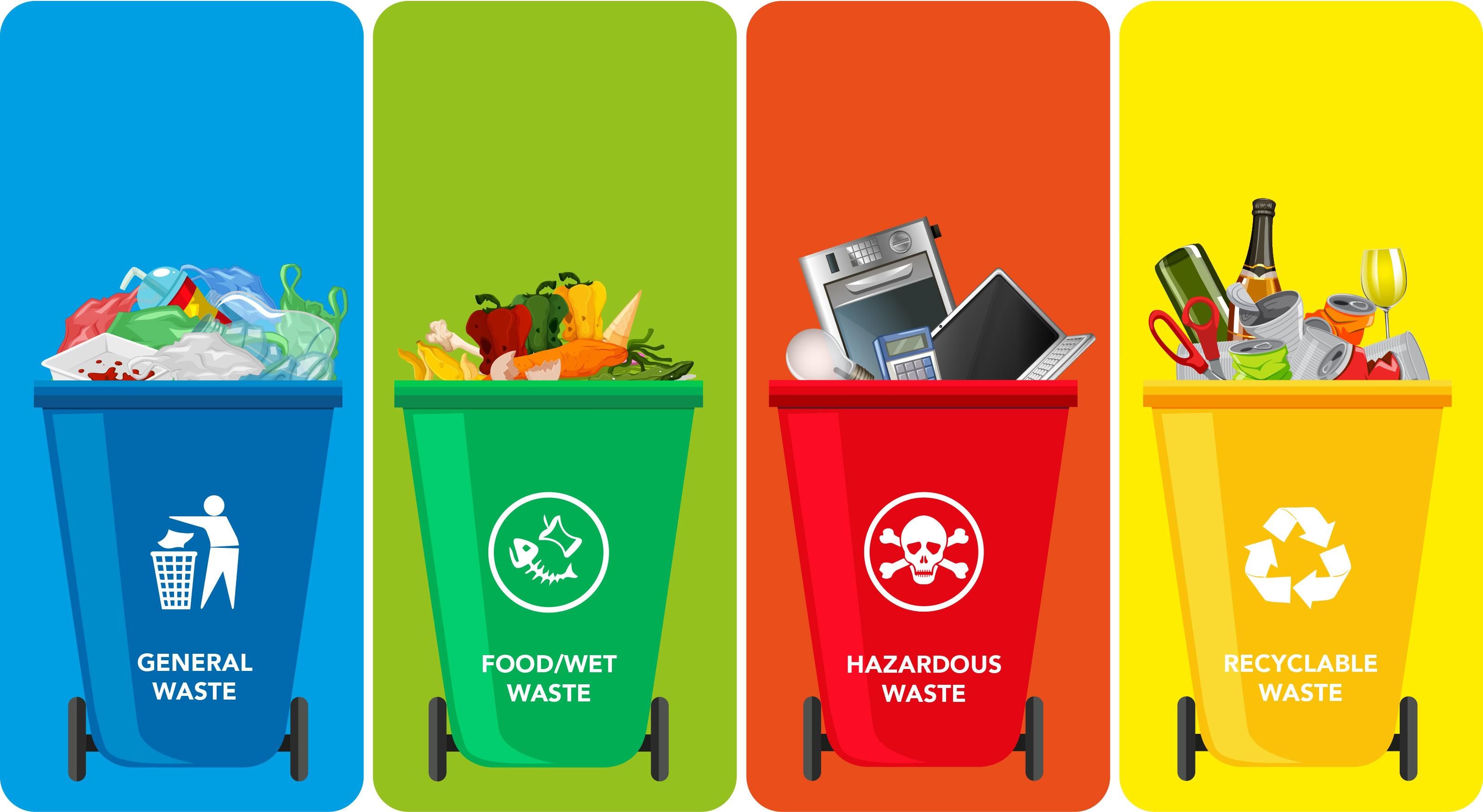
Types of Waste
Waste is anything we do not want and cannot use anymore, like leftover food, broken glass, empty packets, jars, bottles, or rags. We make waste every day at places like homes, schools, offices, factories, and hospitals. It is very important to throw waste in the right way so it does not make the environment dirty. We should also try to make less waste to keep pollution low.
There are two main types of waste:
1. Biodegradable Waste
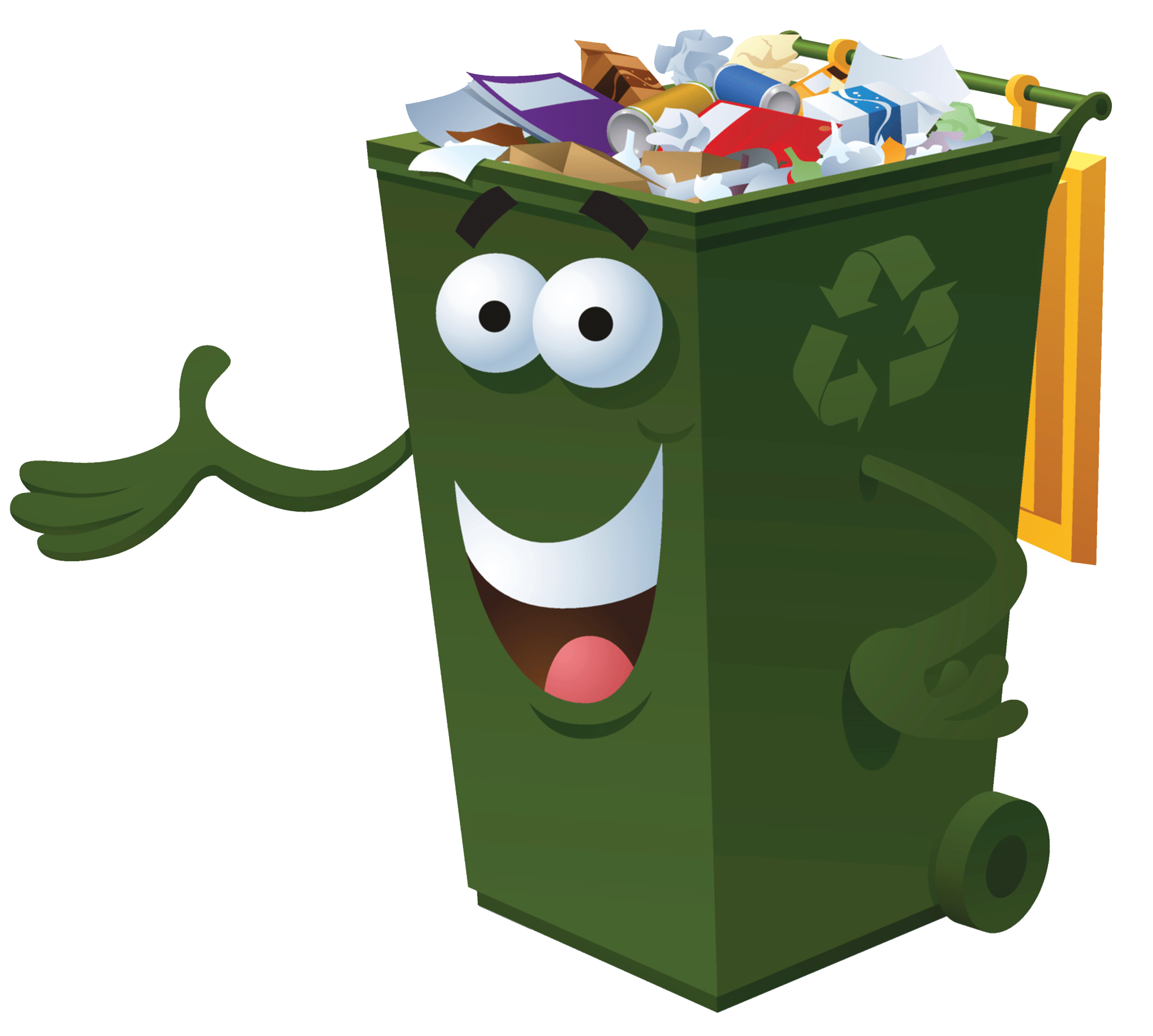
- Biodegradable waste can rot and mix with soil easily.
- Examples of biodegradable waste are vegetable peels, fruits, leaves, wood, bread, paper, and cloth.
- This type of waste is not harmful to nature because it can break down naturally.
2. Non-biodegradable Waste
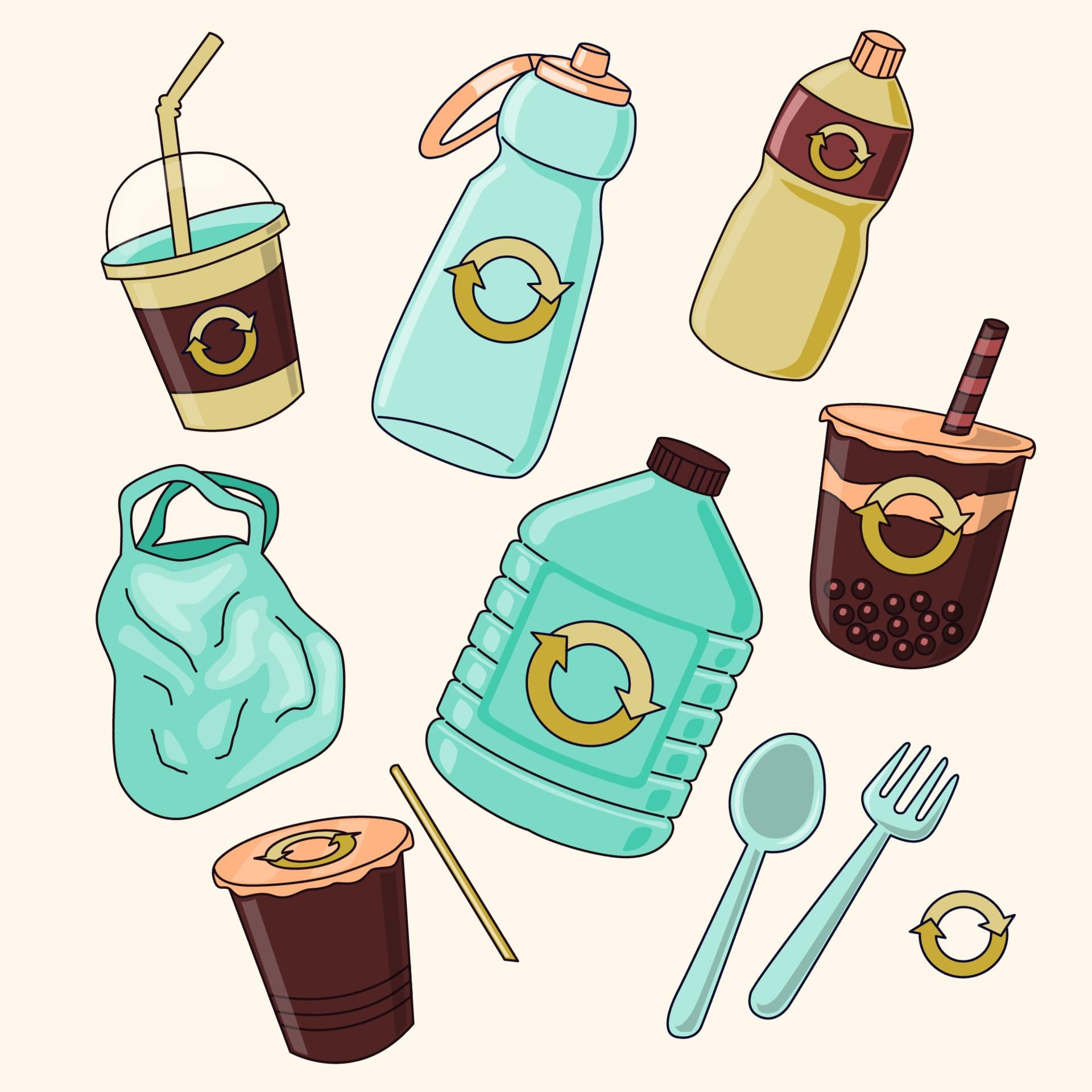
- Non-biodegradable waste cannot rot easily and does not mix with soil.
- Examples of non-biodegradable waste are glass, rubber, metals, and plastic.
- This type of waste is harmful to nature because it does not break down and can cause pollution.
Disposal of Waste
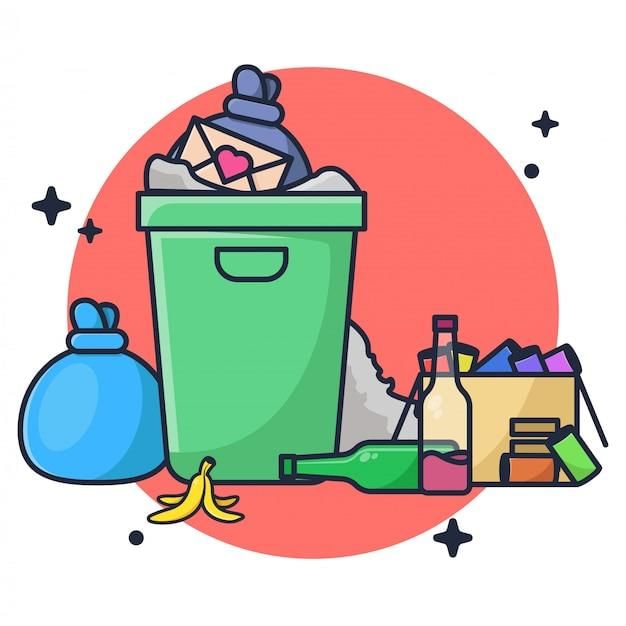
- We make waste every day at home.
- We should collect waste in garbage bins in our homes and neighborhoods.
- Sometimes, people throw waste in open areas, drains, or on roads, which is wrong.
- Throwing waste in open places causes air pollution, makes the ground a breeding place for insects, creates bad smells, and spreads diseases.
- Waste thrown in water bodies causes water pollution and harms plants and animals living in water.
- We should follow these steps to throw waste properly:
- Keep household waste in covered dustbins at home.
- Separate waste at home into biodegradable and non-biodegradable types.
- Give the separated waste to the garbage collector who comes to our house.
- If there is no garbage collector, throw the waste in big green and blue bins kept by the municipal corporation in the neighborhood.
- The green bin is for biodegradable waste, like vegetable peels and leaves.
- The blue bin is for non-biodegradable waste, like plastic and glass.
- Trucks from the municipal corporation collect waste from these two bins and take it to separate dumping sites.
Conserving the Environment
Making too much waste is dangerous for the environment and the health of living beings. We should manage waste properly to save the environment.
The best way to manage waste is to follow the three R's: reduce, reuse, and recycle.
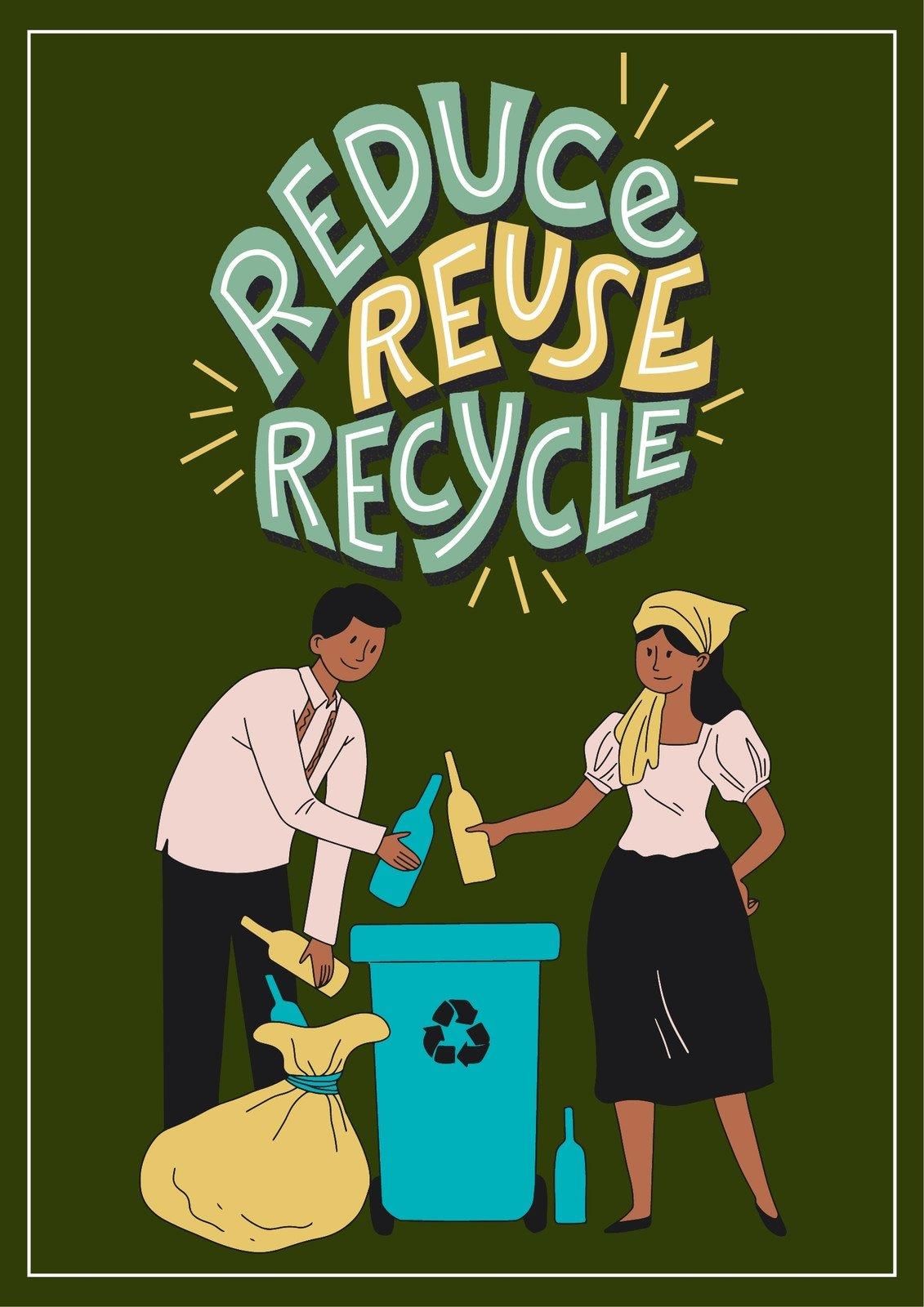
Reduce
Reducing means making less waste to help the environment. We can reduce waste by doing these things:
- Buy things only if we really need them.
- Use products that have less packaging, like buying things with less plastic wrapping.
- Use washable plates and cups at parties or while traveling instead of disposable ones.
- Use reusable cloth napkins to wipe hands instead of paper napkins.
- Avoid using plastic bags and use cloth bags for shopping instead.
- Buy products that can be reused, like rechargeable batteries.
Reuse
Reusing means using things again instead of throwing them away. We can reuse things by doing these things:
- Use plastic bottles, cans, and jars to store other things, like grains or toys.
- Use gift wrapping paper to wrap another gift.
- Donate old clothes and toys to people who need them.
- Give old storybooks and schoolbooks to a library or to someone who can use them.
- Use old magazines and newspapers to do craft work.
- Use pages left in old notebooks to do rough work.
- Use both sides of paper to write or draw.
Recycle
Recycling means turning old things into new things. We should separate items that can be recycled and sell them to a ragpicker. Ragpickers collect items and send them for recycling, which saves natural resources and reduces pollution.
Some common things that can be recycled are glass, metals, paper, plastics, batteries, and rubber:
- Paper is recycled to make new paper.
- Steel cans are melted to make new cans.
- Plastic items are melted to make new plastic products.
- Broken glass pieces are recycled to make new containers.
- Old batteries are recycled to make new batteries.
- Rubber items are recycled to make new rubber products.
Fun Fact
- The newspapers are printed on recycled paper.
- If we follow the three R's—reduce, reuse, and recycle—we can also follow a fourth R: refuse.
- Refuse means to say no to things that can harm the environment and human health.
Points To Remember
- Anything that is unwanted and no longer of use to us is called waste.
- There are two types of waste: biodegradable waste and non-biodegradable waste.
- Wastes that can rot and mix easily with soil are called biodegradable waste.
- Wastes that do not rot easily and do not mix with soil are called non-biodegradable waste, and they are harmful to the environment.
- We should throw waste in the right way to keep the environment clean.
- It is very important to save the environment by managing waste properly.
- The best way to manage waste is to follow the three R's: reduce, reuse, and recycle.
- We should make less waste to reduce pollution.
- Instead of throwing things away, we should try to reuse them to reduce waste.
- We can sell things for recycling to help save resources and reduce pollution.
- We should say no to things that can harm the environment and human health.
Glossary
- Foul bad: Something that smells very bad.
- Segregate: To separate things into different groups.
- Disposable: Something meant to be thrown away after use.
- Conserve: To protect or save something.
- Donate: To give money or things to help others.
|
43 docs|16 tests
|
FAQs on Waste Disposal Chapter Notes - Social Studies Class 4 ICSE
| 1. What are the different types of waste? |  |
| 2. How should we dispose of different types of waste? |  |
| 3. Why is it important to conserve the environment? |  |
| 4. What are some fun activities to learn more about waste disposal? |  |
| 5. What key points should we remember about waste disposal? |  |




















